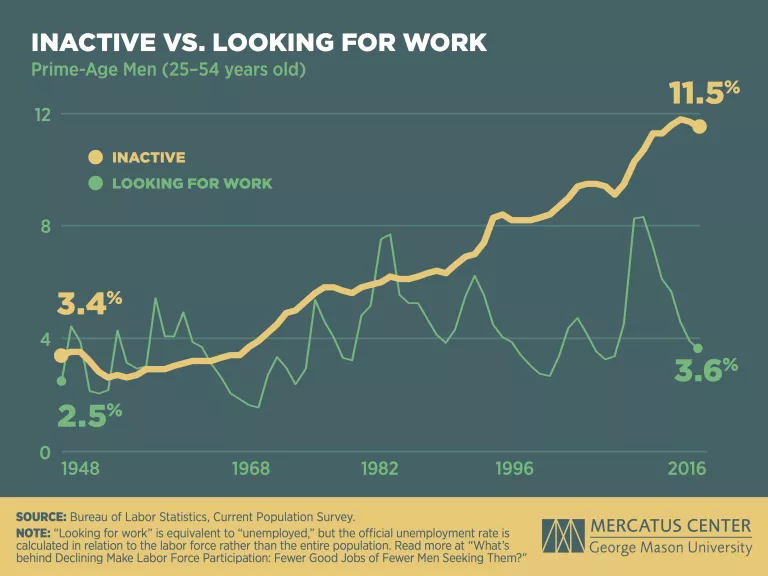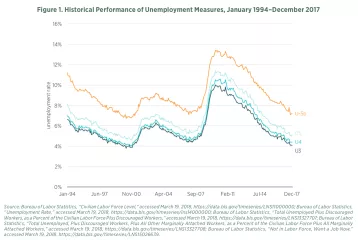- | Government Spending Government Spending
- | Expert Commentary Expert Commentary
- |
Why Men Are Leaving the Labor Force
There has been enormous change across American society over the past half century. The Civil Rights Act was enacted in 1964, the Americans with Disabilities Act was enacted in 1990, and the Supreme Court decision in Obergefell v. Hodges in 2015 upheld same-sex couples’ right to marry. We’ve also seen women’s participation in the workforce steadily increase, almost doubling since the late 1940s. Similarly, the percentage of immigrants in the US population has more than doubled since 1970 (although it’s still below the peak seen at the turn of the 20th century). While all this has been happening, increasing automation and trade have shifted new job growth away from manufacturing and toward the personal and professional services industries.
But there’s another, less noticed social change that is now coming to light: the number of men who have the left the workforce altogether. Over the past 50 years, the percentage of prime-age men who are “inactive”—neither working nor looking for work—has more than tripled. Economists generally expect men between the ages of 25 and 54—those who are in the prime of their working lives—to have the highest rates of employment. But as the first figure shows, seven million prime-age men—11.5 percent of the population—are staying away from the labor market.

New research published by the Mercatus Center at George Mason University digs into the question of how labor market inactivity has risen over time and which men are inactive. It finds that, contrary to claims made in 2016 by the Obama administration, the rise is not the result of a lack of available jobs or unreasonably low wages. Furthermore, the true unemployment rate is not actually 42 percent (a number that counts retirees and people who are too disabled to work as unemployed), as President Trump suggested on the campaign trail. In fact, the second figure below illustrates government survey findings that only 14 percent of inactive prime-age men say that they want a job. Instead, the problem seems to be one of supply: the men who are inactive simply aren’t motivated to seek employment.
Read the rest of this essay: Supply or Demand? What’s the Story behind Men Leaving the Labor Force?

